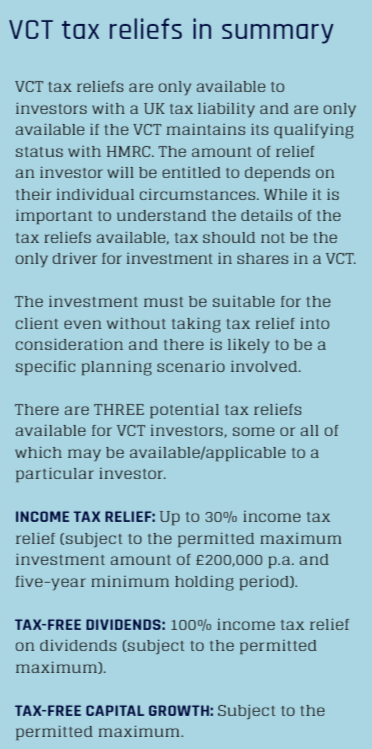It is worth comparing the risks of VCTs with EIS. The biggest difference is that VCTs generally operate a much bigger pool of investee companies, giving increased diversification and limiting investment risk.

Secondly, as they are listed on a recognised exchange and hold more liquid assets than EIS funds (currently, at least 30% of the VCT’s funds are not required to be invested in qualifying holdings, although this is being reduced to 20% for accounting periods ending on or after 6 April 2019), they have increased liquidity.
For these reasons, a VCT would usually be viewed as a less risky investment than an EIS company or fund.
This piece has been published as part of the first Adviser’s Guide to Venture Capital Trusts. For the full guide go to https://intelligent-partnership.com/reports/an-advisers-guide-to-vct/
